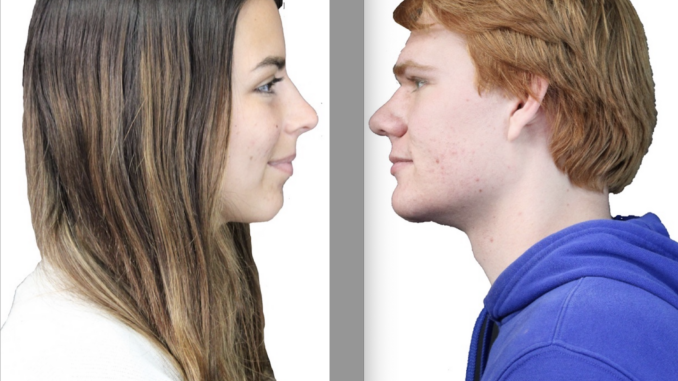
design: Emma Thompson
Old fashioned keeps us safe
Emma Thompson
For youth drunk drivers in 2020, the fatal crash rate for people from 16 to 19 in the United States was three times the rate for those who are 20 and over, according to PersonalInjurySandiego.org. With setting the drinking age to 21, this shows how dangerous the growth of a statistic could get if they lowered the law of the drinking age, due to how much youth take advantage of drinking over adults.
All 50 states have set the minimum drinking age to 21 although exceptions do exist on a state-by-state basis for consumption at home, under adult supervision, for medical necessity, and other reasons.
For starters, if lawmakers lowered the drinking age, this policy could cause teenagers to make irresponsible decisions that would most likely end badly for not only themselves but also the people around them.
For example, more car accidents would occur. Before the law that stated adults needed to be
21+ to drink was passed in each state, drunk drivers were involved in more than twice as many fatal crashes as today. This law prevents tragedies by decreasing car crashes by an
Estimated 16 percent, which keeps younger people safer from many other risks, according to Madd.org.
Another reason for keeping the legal drinking age higher is how the use of a drug, in this case alcohol, with an adolescent’s brain, can cause major brain development effects.
Among its many effects on the brain and brain function— such as impairing balance, motor coordination, and decision making, alcohol interferes with the drinker’s ability to form memories. This is because the brain isn’t fully developed until people are 22.
Research shows that people who start drinking before the age of 15 are at a higher risk for developing alcohol use disorder later in life. For example, adults ages 26 and older who began drinking before age 15 are 5.6 times more likely to report having alcohol use disorder in the past year as those who waited until age 21 or later to begin drinking, according to Nia.Nih.gov.
If the MLDA (Minimum Legal Drinking Age Laws) actually did lower the drinking age, then it would expose even younger teens, like middle schoolers, to drinking alcohol.
Hypothetically speaking, if the drinking age was lowered down to 16 years of age, like Germany’s law, then this change would create an even younger audience who would desire to drink. From my experience of being a middle schooler, I always thought that whatever a high schooler did was cool, and it made me want to do what they did.
If the legal drinking age stays at an older age, then that older age should correlate with people consuming less alcohol. In other words, if the drinking age is between 20-21, those younger drink less and continue to drink less through the years prior to them legally being able to
drink.
Thus, youth who don’t drink until their 20-21 tend to drink less as adults because they are exposed to it when they are more mature and responsible, according to Pubs.niaaa.nih.gov.
Lastly, If we keep the legal drinking age to 21 and over, this will keep the youth out of harm from drinking at a younger age and ultimately help them live better lives in the future.
It’s time to change it back
Ethan Hunter
It’s time the United States lowers the drinking age back to 21.
The fact that America is one of the few countries that has a limit of 21 is surprising in the first place. The United States is one of the only 12 countries that has a National Minimum Drinking Age of 21, and is the only 1st or 2nd world country out of the 12.
Before the 21st Amendment in 1984, the drinking age was 18 years old. This is how it worked for centuries in the country, and it worked just fine for 18-21 year olds.
Both of the World Wars, the Vietnam War, and all the wars fought in the country’s history had kids fighting in it. If the government sends a kid to hold a gun for their country, why do they make sure he can’t hold a beer?
18 is the legal age of adulthood in America, and they can drive, have a bank account, and even are in college for two to three years before they can legally have a drink.
But let’s be honest, kids are drinking no matter what the government says. This is the problem with underage drinking, the government says that 18 year olds can’t drink legally, which promotes unsafe and illegal drinking habits with teens. If the drinking age was lowered, teens could begin drinking in a supervised, safe environment like a bar with friends and family.
On the same idea of safety, the United States has more drunk driving traffic accidents (31% of road accident deaths involving alcohol) than other countries with lower minimum drinking ages (France with 29%, Great Britain with 16% and Germany with 9%). Now whether this is correlation or causation is unclear, but with a higher minimum drinking age, driving fatalities happen more often in these countries.
Not only does a lower minimum drinking age lead to a safer drinking environment for teens beginning to drink, but keeping 18 year-olds illegally drinking is an easy way to break the law with a low chance of consequences from the law promotes breaking the law in other areas as one grows up. It requires a teen to make a fake ID, which is popular in finding a way for kids to get alcohol.
This counterfeiting process is not something that teens should be getting into, because rarely are they punished by the law. This creates a culture that breaking the law in small ways can be fine, which further promotes criminal activity and discourse as one grows up. All of this can be fixed if the United States would lower the drinking age down to 18 to provide a safer environment as teens begin drinking to create safer habits as they continue on.
It is hard to get people to change from what is already the law and commonplace in our society, so I understand that a drinking age lowering is unlikely to come from the government soon. But think about what we are really doing with a higher drinking age than any other first world country. The data doesn’t support that teens are being kept safe by not being allowed to drink, so what is it really doing?


